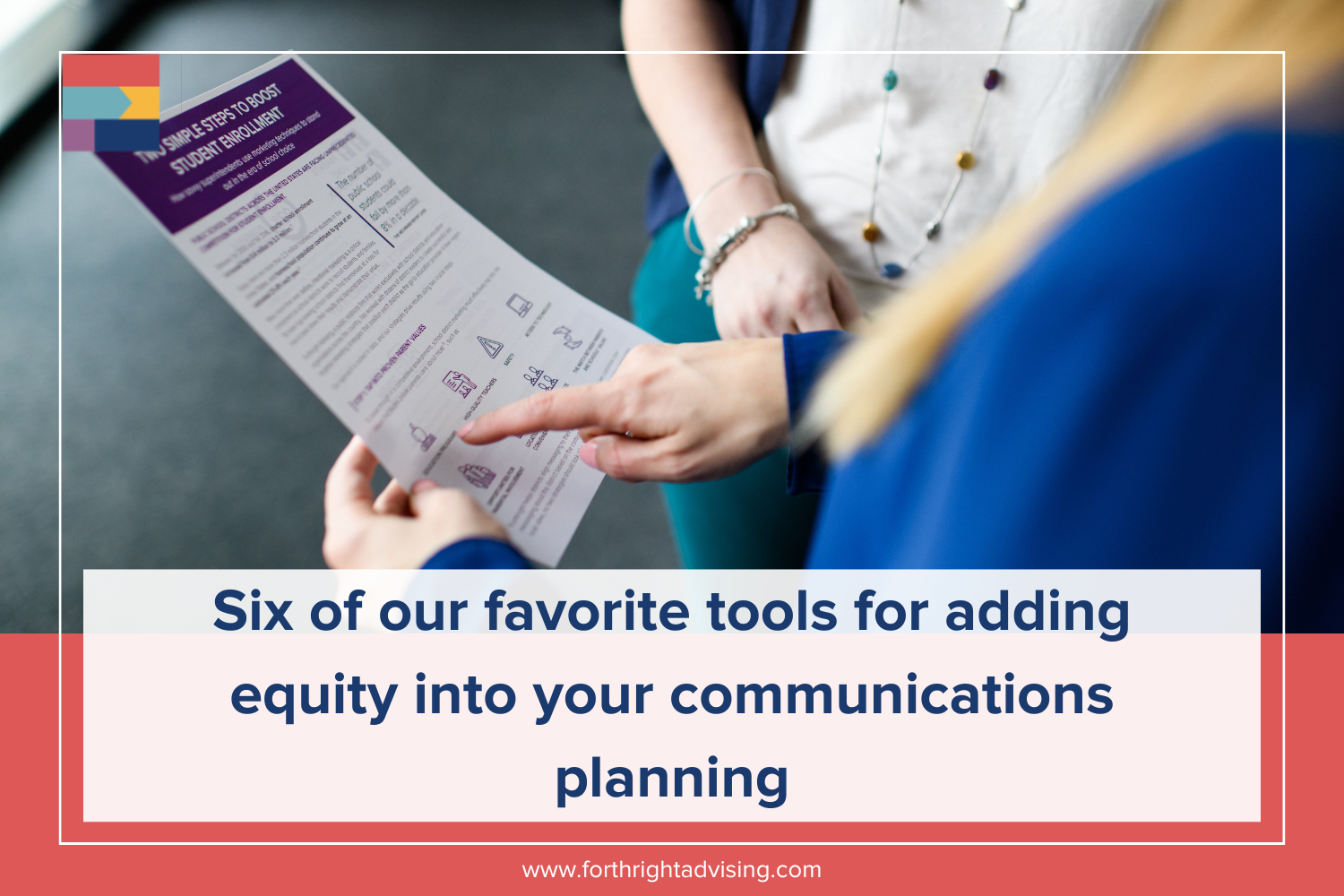Six of Our Favorite Tools for Adding Equity Into Your Communications Planning [Updated March 2021]
As more and more organizations center diversity, equity and inclusion in their work, we must be intentional in how we plan. Long-term and strategic plans are a critical place to mitigate bias, ensure that we're preventing unanticipated outcomes and being intentional in our outreach efforts.
Here are three tools that we love using in our work with clients to ensure our work does the most good possible.
Tool 1
The Management Center’s SMARTIE Goals worksheet: All good communications plans start with goals and objectives. You may have heard of setting SMART goals, but Forthright favorite The Management Center has updated the old format to include an “IE,” ensuring inclusivity and equity are reflected in your goals.
Use when: creating new goals and setting organizational strategy.
Tool 2
Race Forward’s Racial Equity Impact Assessment Toolkit: This toolkit is hugely helpful in considering how your proposed policies, plans and efforts will likely impact different racial and ethnic groups. This two-page toolkit starts with an overview of how to use the resource, and the second page has an incredibly helpful list of questions to discuss during planning.
Use when: creating a new strategic plan, forming a new policy recommendation or developing a new program.
Sign up for our email newsletter to receive all of our best ideas, straight to your inbox
Tool 3
Media Justice’s Narrative Stress Test: Checklist for Using Narrative Strategies for Change: This checklist was created for organizations that use communications and advocacy as a strategy for change. So…basically every single one of our clients and blog readers! This checklist helps communicators like you ensure that your messaging and framing “do not sacrifice each other for social change.”
Use when: creating core messaging for a new program or initiative.
TOOL 4
The Communications Network’s DEI Tools
Rooted in a survey of nonprofit and foundation professionals, this robust resource library has guidance on everything from internal communications to gatherings. Each section includes step-by-step guides to equity-driven communications—and there’s a helpful glossary, too.
Use when: Communicating for social good. This tool is specifically for communications professionals (which is yet another thing to love about it).
TOOL 5
Race Forward Race Reporting Guide
Written for journalists and members of the media, this guide is super helpful for those of us who create content in our roles. The general reporting tips also read like a do’s and don’ts list for marketers.
Use when: Storytelling and writing. This is a great resource for those of us who sometimes wear an “in-house journalist” hat for our organization.
TOOL 6
The Whole Story: Diversity Tips and Tools from the Society of Professional Journalists Some of our country’s top journalists share what they’ve learned about reporting on different race-related topics, and give tips for how to report responsibly.
Use when: You’re learning more about an issue you’re unfamiliar with. The tips and questions within will help you challenge your own bias and assumptions.















